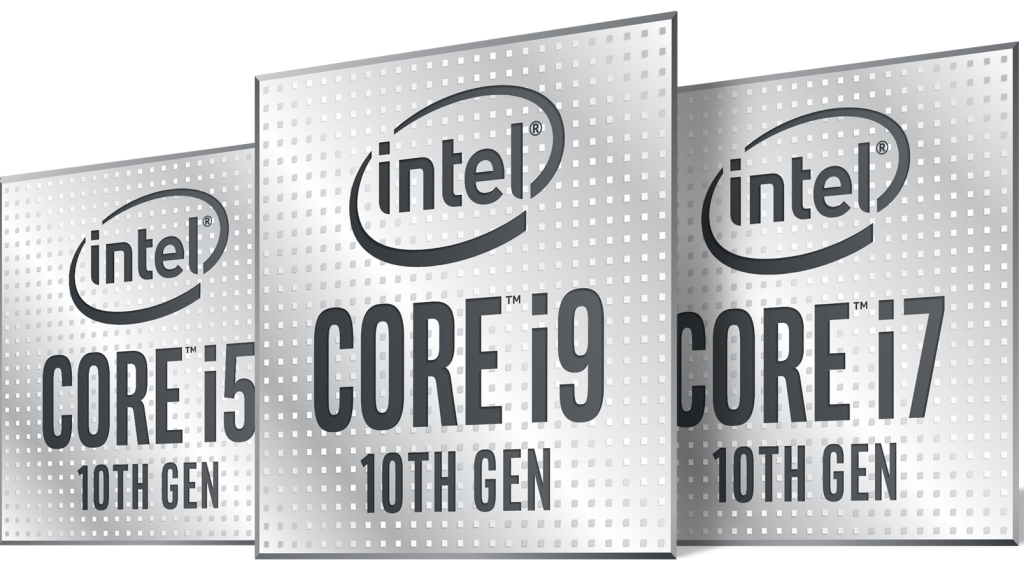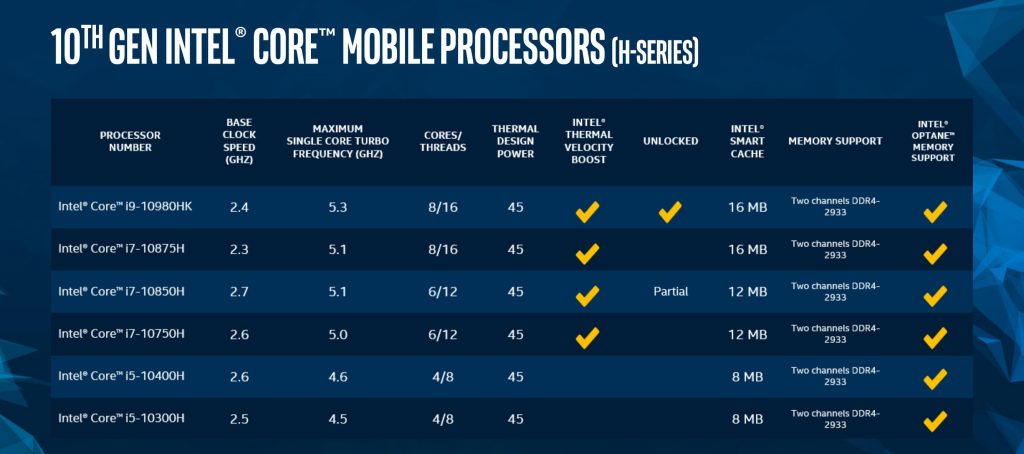

Last year, Intel introduced the 9th Gen Mobile H-series processor for laptops with up to 5GHz speed alongside the 9th Gen desktop processors. Following the launch of 10th Gen Ice Lake and Comet Lake processors, Intel has now announced the 10th Gen Mobile H-series processor based on the Comet Lake family for laptops and is an upgrade to the 9th Gen Mobile H-series processor.
Last year’s 9th Gen mobile processor was capable of up to 5GHz speeds and this time Intel has taken it up a notch further with up to 5.3GHz turbo speeds on the i9-109880HK. The i9-109880HK (unlocked) features 8 cores, 16 threads and supports Intel Thermal Velocity Boost, Intel Adaptix Dynamic Tuning, and Intel Turbo Boost Max technology 3.0.


As usual, the i9 sits at the top which is followed by Core i7, and i5 respectively. The i7-10875H features 8 cores 16 threads and has a base frequency of 2.3 GHz with turbo boost up to 5.1 GHz. The i7 10850H (partial unlock) features 6 cores 12 threads and has a base frequency of 2.3GHz with a turbo boost up to 5.1 GHz. It is followed by the i7 10750H featuring 6 cores 12 threads and has a base frequency of 2.6GHz with a turbo boost of up to 5.0GHz. Lastly, the i5-10400H and i5-10300H features 4 cores 8 threads and have a base frequency of 2.6GHz/2.5GHz with a turbo boost of up to 4.6GHz/4.5GHz respectively. All these have a 45 W TDP (Thermal Design Power) and the top-end i9 can be run in cTDP (Configurable TDP) up to 65W.
Intel says that when compared to a 3-year-old system, the i9-109880HK delivers up to 54% more frames per second in gaming, up to 44% better overall performance, up to 2x faster 4K video rendering and exporting. Furthermore, these processors support the latest Intel Wi-Fi 6 AX201 Gig+, Thunderbolt 3, Intel Optane memory H10, and more.
Laptops with this latest mobile processor have been announced by Razer, ASUS, Acer, MSI, and more OEMs are expected to announce new laptops soon. Intel 10th Gen H-series processor takes on the recently-launched AMD Ryzen 4000 processors. It should be interesting to see the real-time performance of both the processors.
